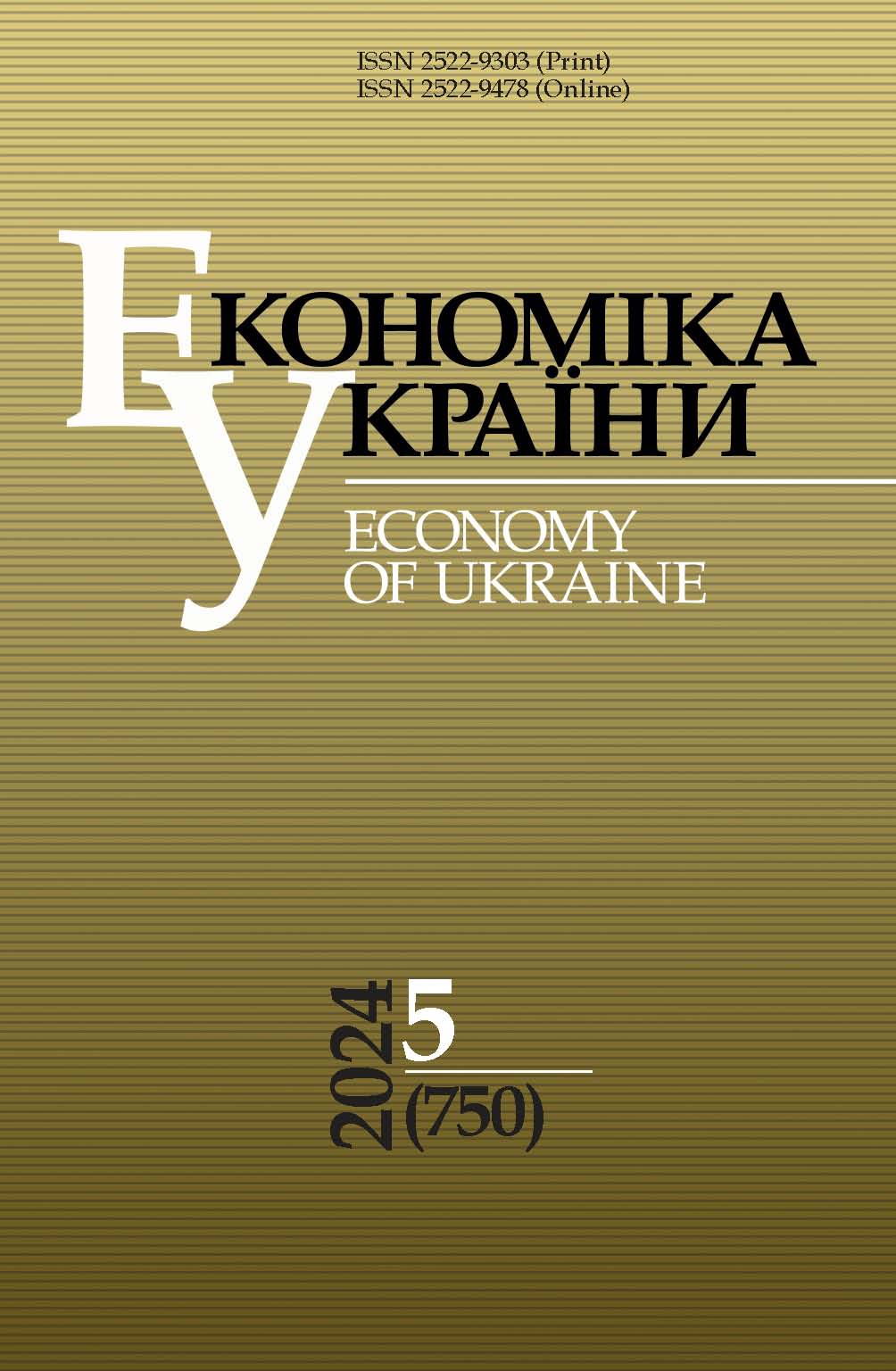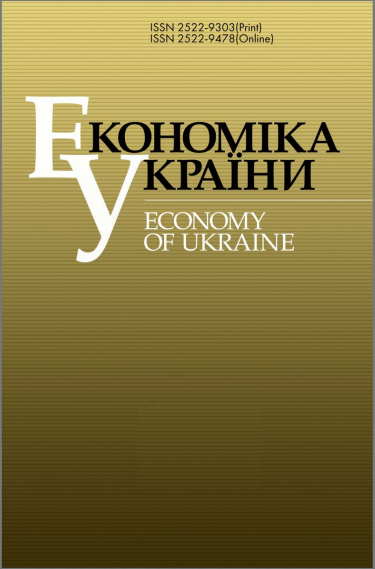ENHANCING EDUCATIONAL EFFICIENCY THROUGH DATA ENVELOPMENT ANALYSIS A CASE STUDY OF THE UNIVERSITY CENTRE OF MAGHNIA-ALGERIA
DOI:
https://doi.org/10.15407/economyukr.2024.05.093Keywords:
data envelopment analysis; educational efficiency; the COVID-19 pandemic; decision-making unitsAbstract
Efficiency is a fundamental concept that involves achieving more with fewer resources. In the field of education, efficiency means using fewer or even limited resources to achieve the desired learning outcomes. Yet, measuring education efficiency is a complex task that requires the use of appropriate methods. One such method is Data Envelopment Analysis (DEA), a nonparametric technique that has been widely used in various fields, including education, health, and banking. This system is based on research operations that can provide users with strategies to achieve optimal efficiency.
The aim of this study is to use DEA to calculate the efficiency of the University Centre of Maghnia during the COVID-19 period through comparing the different institutes within this centre. The use of DEA in this study provides an opportunity for decision-makers to strategize effectively and avoid unnecessary costs.
The results of the study indicate that two Decision-Making Units (DMUs), namely the master's level in law and the bachelor's level in technology sciences, do not operate at perfect efficiency. Through the use of data analysis, the study identifies the necessary changes to achieve complete efficiency. The DMUs used for comparison are the master's level in Economics, Arabic Languages and Literature, and master of Technology.
The study revealed that the average efficiency in the input orientation was 94%, while the output orientation was 92%, assuming various returns to scale. These findings suggest that there is room for improvement in the efficiency of the University Centre of Maghnia.
References
Alharbi, H. (2015). Internal and External Efficiency of the Saudi Education System. International Journal of Humanities and Social Science. Vol. 5. No. 8(1). URL: https://www.ijhssnet.com/journal/index/3215
Duan, S. (2019). Measuring university efficiency: An application of data envelopment analysis and strategic group analysis to Australian universities. Benchmarking: An International Journal. Vol. 26. Iss. 4. P. 1161-1173. https://doi.org/10.1108/BIJ-10-2017-0274
Ergulen, A., Ünal, Z., Harmankaya, I. (2021). Data Envelopment Analysis and Efficiency Analysis of Higher Education Institutions: Example of Selçuk University. Konuralp Journal of Mathematics. Vol. 9. Iss. 1. P. 201-208. URL: https://www.researchgate.net/publication/351195651_Data_Envelopment_Analysis_and_Efficiency_Analysis_of_Higher_Education_Institutions_Example_of_Selcuk_University
Evenstad, S. (2017). “Be Excellent and Do More with Less”: A Paradox behind Job Burnout Threatening Organizational Sustainability. International Journal of Systems and Society. Vol. 2. Iss. 2. P. 52-67. https://doi.org/10.4018/IJSS.2015070104
Fotova Čiković, K., Martinčević, I., Lozić, J. (2022). Application of Data Envelopment Analysis (DEA) in the Selection of Sustainable Suppliers: A Review and Bibliometric Analysis. Sustainability. Vol. 14. Iss. 11. P. 66-72. https://doi.org/10.3390/su14116672
Halkos, G., Tzeremes, N., Kourtzidis, S. (2010). A DEA approach for measuring university departments’ efficiency. MPRA Paper. No. 24029. URL: http://mpra.ub.uni-muenchen.de/24029/
IÇöz, C., Sönmez, H. (2015). Measuring the Relative Efficiencies of Statistics Departments in Turkey Using Data Envelopment Analysis. Alphanumeric Journal. Vol. 3. Iss. 1. P. 41-50, URL: https://dergipark.org.tr/en/download/article-file/19239
Johnes, J., Portela, M., Thanassoulis, E. (2017). Efficiency in education. Journal of the Operational Research Society. Vol. 68. Iss. 4. P. 331‑338. https://doi.org/10.1057/s41274-016-0109-z
Khan, B., Pai, P., Kachwala, T. (2020). Data Envelopment Analysis – Is BCC model better than CCR model? Case of Indian Life Insurance companies. Management Review. Vol. XXXVIII. Iss. 1. P. 17-35. URL: https://management-review.nmims.edu/wp-content/uploads/2020/01/MR%201-17-35.pdf
Lai, H., Shi, H., Zhou, Y. (2020). Regional technology gap and innovation efficiency trap in Chinese pharmaceutical manufacturing industry. PLOS ONE. 2020. May 20. https://doi.org/10.1371/journal.pone.0233093
Lockheed, M., Hanushek, E., Policy, H. (1994). Concepts of educational efficiency and effectiveness. URL: https://www.researchgate.net/publication/44820444_Concepts_of_educational_efficiency_and_effectiveness
Martorana, M. (2007). Jargon Alert: Pareto Efficiency. Region Focus. Winter. P. 8. URL: https://fraser.stlouisfed.org/title/econ-focus-federal-reserve-bank-richmond-3941/winter-2007-476936/jargon-alert-504048
Mojahedian, M., Mohammadi, A., Abdollahi, M., Kebriaeezadeh, A., Sharifzadeh, M., Asadzandi, S., Nikfar, S. (2020). A review on inputs and outputs in determining the efficiency of universities of medical sciences by data envelopment analysis method. Medical Journal of the Islamic Republic of Iran. 34. URL: https://www.ncbi.nlm.nih.gov/pmc/articles/PMC7456438/
Rosenmayer, T. (2014). Using Data Envelopment Analysis: A Case of Universities. Review of Economic Perspectives. Vol. 14. Iss. 1. P. 34-54. https://doi.org/10.2478/revecp-2014-0003
Thanassoulis, E., Kortelainen, M., Allen, R. (2012). Improving envelopment in Data Envelopment Analysis under variable returns to scale. European Journal of Operational Research. Vol. 218. Iss. 1. P. 175-185. https://doi.org/10.1016/j.ejor.2011.10.009
Downloads
Published
How to Cite
Issue
Section
License
Copyright (c) 2024 Publisher PH "Academperiodyka" of the NAS of Ukraine

This work is licensed under a Creative Commons Attribution-NonCommercial-NoDerivatives 4.0 International License.



